Hemianthus micranthemoides
Scientific name: Hemianthus micranthemoides
Family: Scrophulariaceae
Maximum size reached under cultivation: 20 - 40 cm (7.87 - 15.75 inch)
014
Recommended pH range: 6.3 - 7.2
Recommended water hardness: 4 - 18°dGH (71.43 - 321.43ppm)
0°C 32°F30°C 86°F
Recommended temperature range: 19 - 27 °C (66.2 - 80.6°F)
Preferred propagation method: Cuttings
Native to: North America
Growth rate: Fast
Recommended substrate: Fine gravel
Lighting requirements: Bright
Ideal placement in tank: Background
Common Names
Pearl Grass, Baby’s Tears
Origin
Hemianthus micranthemoides originates from North America, particularly in the eastern United States. It typically grows in shallow freshwater environments such as ponds, marshes, and slow-moving streams. While once believed to be extinct in the wild, it remains widely available in the aquarium trade through commercial cultivation.
Growing Conditions
This plant can grow both submerged and emersed, although it is most commonly cultivated fully submerged in aquariums. In submerged form, it develops dense, bright green foliage and delicate stems. When grown emersed, the leaves are slightly smaller and rounder, and under the right conditions, the plant may produce tiny flowers.
Hemianthus micranthemoides prefers bright lighting to thrive and maintain compact growth. Without sufficient light, it may grow leggy or begin to decay at the base. It tolerates a wide range of conditions, including a pH of 6.3–7.2 and water hardness between 4–18 °dGH. The ideal temperature range is 19–27°C (66.2–80.6°F). While not essential, CO2 supplementation enhances growth and supports vibrant, healthy foliage.
Planting Area
Hemianthus micranthemoides is often used in the foreground or midground of aquariums, depending on how it is trimmed. Planted densely in the foreground, it can create a lush green carpet. When allowed to grow taller, it adds fine texture to the midground of planted tanks. Aquascapers often trim it regularly to encourage compact, horizontal growth and prevent overshadowing of lower areas.
Propagation
Propagation is simple and effective using stem cuttings. Cut a healthy section from the mother plant, remove the lower leaves, and carefully insert the stem into the substrate. Roots form quickly, and the new plant will establish itself within a few weeks. Some aquarists lay cuttings horizontally to form a dense mat, especially in aquascapes focused on carpeting plants.
Difficulty
Hemianthus micranthemoides is considered a medium-difficulty plant. It is relatively undemanding once established, but achieving its full visual potential requires stable lighting, nutrients, and optional CO2. Without trimming and care, it may grow too tall and overshadow nearby plants. With consistent maintenance, it becomes a rewarding and visually striking feature in planted aquariums.
Short Description
Known as Pearl Grass or Baby’s Tears, Hemianthus micranthemoides is a delicate, fast-growing aquarium plant ideal for aquascapes. It forms a vibrant green carpet in the foreground or creates a soft, flowing appearance in the midground. Although it thrives with added CO2 and bright lighting, it can adapt to a range of setups. Once believed extinct in the wild, this North American native remains a favorite among aquarists thanks to its fine-leaved texture and lush growth habit.
Frequently Asked Questions (FAQ)
-
Can Hemianthus micranthemoides grow without CO2 injection?
Yes, it can grow without CO2, but its growth will be slower and less compact. For a dense carpet or vibrant appearance, CO2 supplementation is highly recommended.
-
Will this plant grow in low light conditions?
No, this species requires bright lighting to stay healthy and compact. In low light, it tends to grow tall and leggy, often losing its lower leaves.
-
Is Hemianthus micranthemoides the same as Hemianthus callitrichoides?
No, although they look similar, they are different species. H. micranthemoides has slightly larger leaves and grows taller, while H. callitrichoides (commonly known as Dwarf Baby Tears) is much smaller and slower growing.
-
Can it be used in a carpeting layout?
Yes, when trimmed frequently and laid horizontally, it can form a dense, lush carpet in the foreground of an aquarium.
-
Does Hemianthus micranthemoides flower underwater?
No, it rarely flowers when submerged. Flowering is more likely in emersed growth in humid terrarium or paludarium setups.
-
How often should I trim Hemianthus micranthemoides?
Trim it every 1–2 weeks to maintain a low, bushy appearance. Frequent trimming encourages lateral growth and prevents the plant from growing vertically and shading itself.
-
What substrate is best for Pearl Grass?
A nutrient-rich, fine-grain substrate is ideal. Fine gravel or enriched plant soil helps anchor the delicate stems and supports healthy root development.
-
Why is my Hemianthus micranthemoides turning yellow or melting?
This could be caused by poor lighting, lack of nutrients (especially nitrogen or iron), or a sudden change in water conditions. Check your fertilization routine and ensure the lighting is sufficient.
-
Can fish uproot Hemianthus micranthemoides?
Yes, especially bottom dwellers like corydoras or loaches. Consider planting in dense clusters and letting the roots establish before adding active bottom-dwelling species.
-
Is it suitable for nano tanks?
Yes, absolutely. Due to its fine texture and compact size, Hemianthus micranthemoides is a popular choice for nano aquascapes, provided lighting and nutrients are adequate.
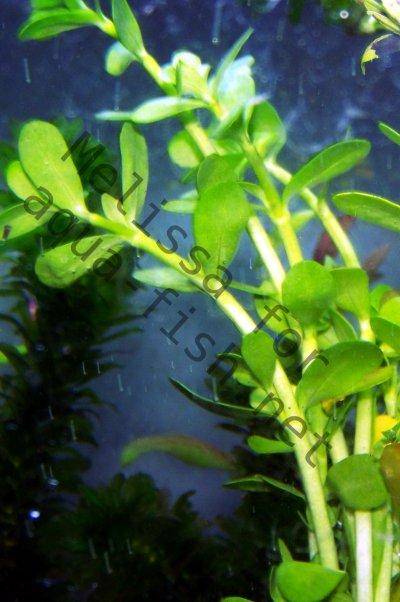
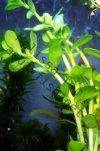
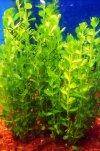
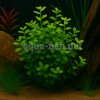 Bacopa australis
Bacopa australis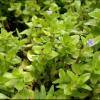 Bacopa caroliniana
Bacopa caroliniana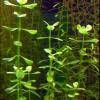 Bacopa monnieri
Bacopa monnieri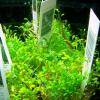 Glossostigma elatinoides
Glossostigma elatinoides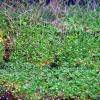 Hemianthus callitrichoides
Hemianthus callitrichoides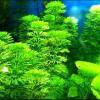 Limnophila aquatica
Limnophila aquatica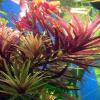 Limnophila aromatica
Limnophila aromatica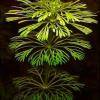 Limnophila sessiliflora
Limnophila sessiliflora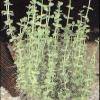 Lindernia rotundifolia
Lindernia rotundifolia